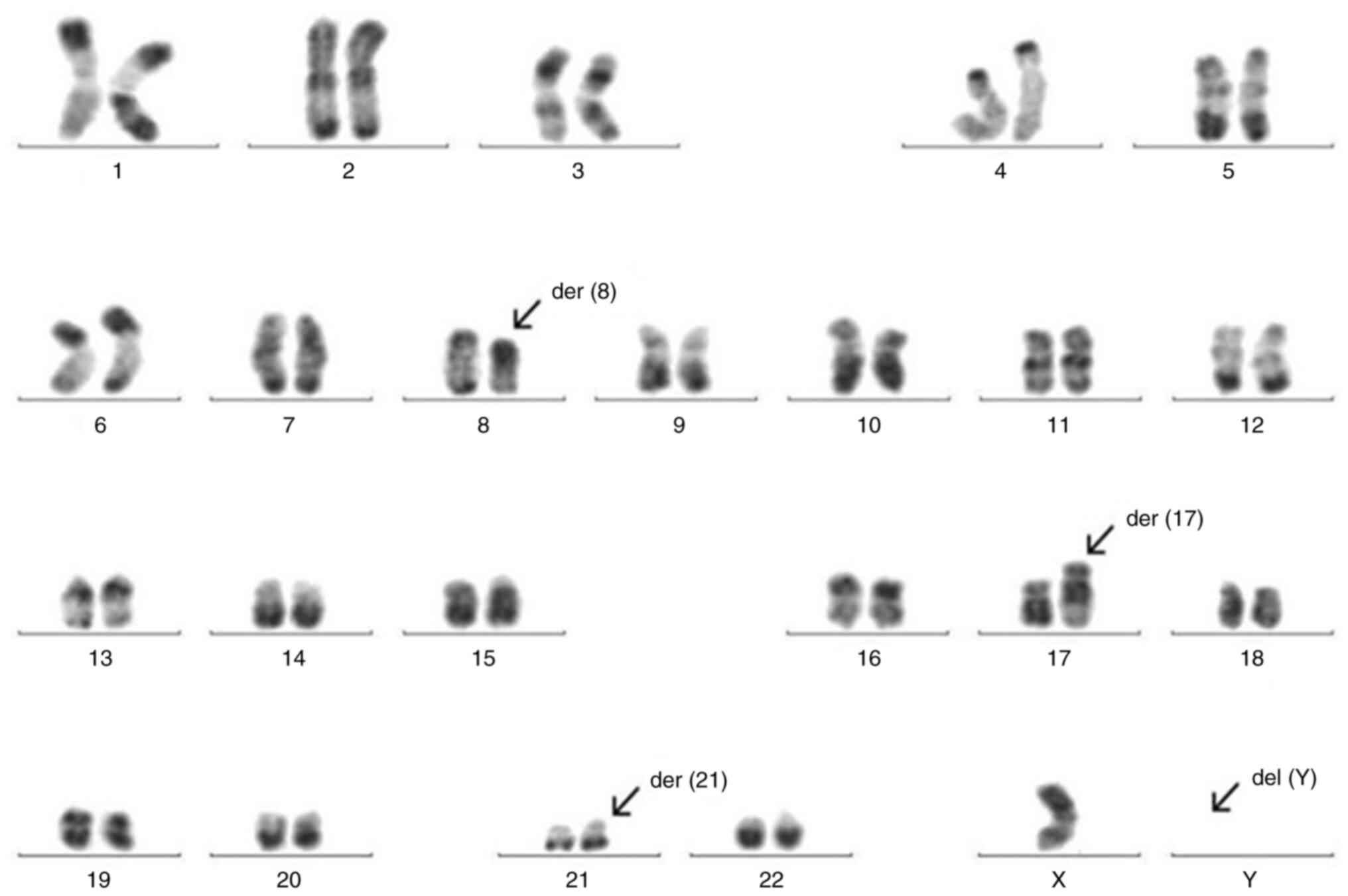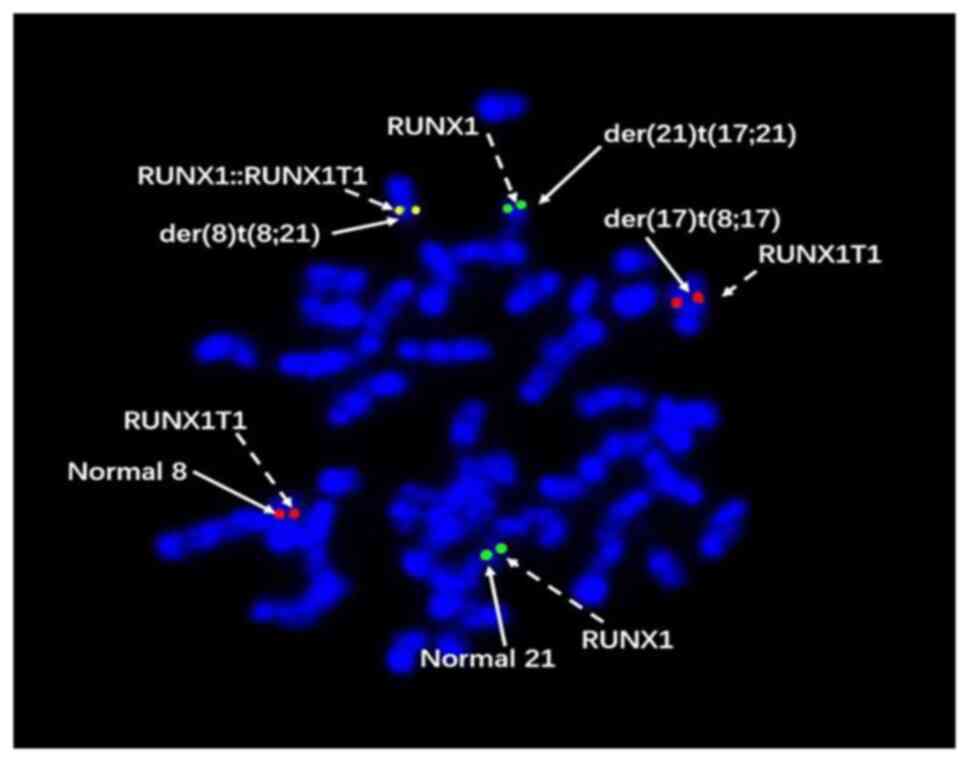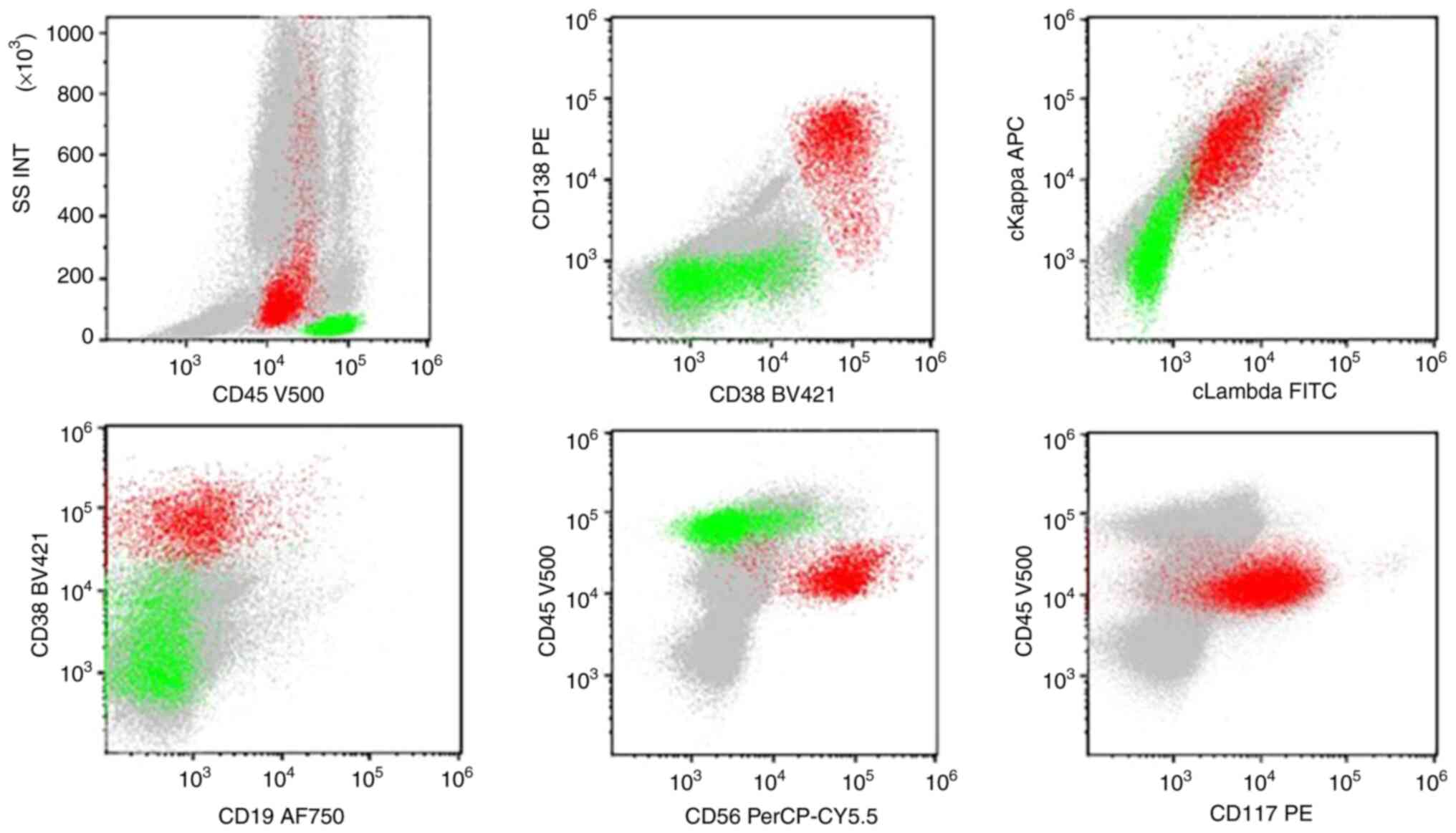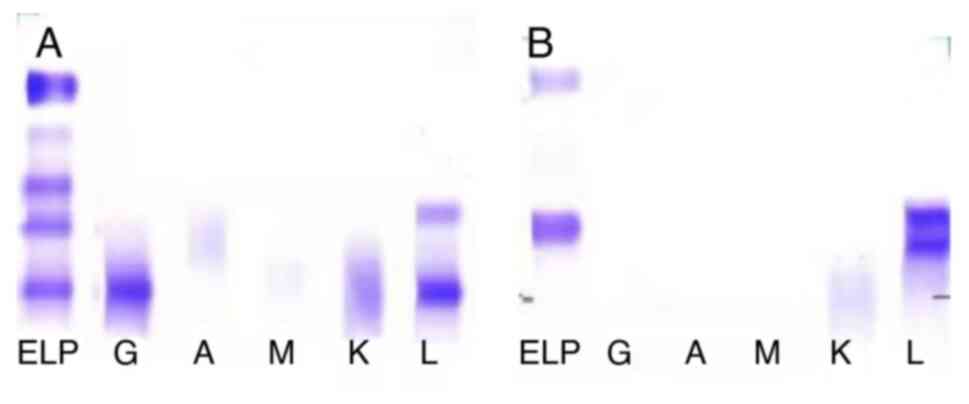|
1
|
Khoury JD, Solary E, Abla O, Akkari Y,
Alaggio R, Apperley JF, Bejar R, Berti E, Busque L, Chan JKC, et
al: The 5th edition of the World Health Organization classification
of haematolymphoid tumours: Myeloid and histiocytic/dendritic
neoplasms. Leukemia. 36:1703–1719. 2022. View Article : Google Scholar : PubMed/NCBI
|
|
2
|
Sanderson RN, Johnson PR, Moorman AV,
Roman E, Willett E, Taylor PR, Proctor SJ, Bown N, Ogston S and
Bowen DT: Population-based demographic study of karyotypes in 1709
patients with adult acute myeloid leukemia. Leukemia. 20:444–450.
2006. View Article : Google Scholar : PubMed/NCBI
|
|
3
|
Kyle RA, Durie BGM, Rajkumar SV, Landgren
O, Blade J, Merlini G, Kröger N, Einsele H, Vesole DH, Dimopoulos
M, et al: Monoclonal gammopathy of undetermined significance (MGUS)
and smoldering (asymptomatic) multiple myeloma: IMWG consensus
perspectives risk factors for progression and guidelines for
monitoring and management. Leukemia. 24:1121–1127. 2010. View Article : Google Scholar : PubMed/NCBI
|
|
4
|
Gabert J, Beillard E, van der Velden VH,
Bi W, Grimwade D, Pallisgaard N, Barbany G, Cazzaniga G, Cayuela
JM, Cavé H, et al: Standardization and quality control studies of
‘real-time’ quantitative reverse transcriptase polymerase chain
reaction of fusion gene transcripts for residual disease detection
in leukemia-a Europe against cancer program. Leukemia.
17:2318–2357. 2003. View Article : Google Scholar : PubMed/NCBI
|
|
5
|
Beillard E, Pallisgaard N, van der Velden
VHJ, Bi W, Dee R, van der Schoot E, Delabesse E, Macintyre E,
Gottardi E, Saglio G, et al: Evaluation of candidate control genes
for diagnosis and residual disease detection in leukemic patients
using ‘real-time’ quantitative reverse-transcriptase polymerase
chain reaction (RQ-PCR)-a Europe against cancer program. Leukemia.
17:2474–2486. 2003. View Article : Google Scholar : PubMed/NCBI
|
|
6
|
Wang X, Wang J, Wei S, Zhao J, Xin B, Li
G, Zhao J, Wu D, Luo M, Zhao S, et al: The latest edition of WHO
and ELN guidance and a new risk model for Chinese acute myeloid
leukemia patients. Front Med (Lausanne). 10:11654452023. View Article : Google Scholar : PubMed/NCBI
|
|
7
|
Kawakami K, Nishii K, Hyou R, Watanabe Y,
Nakao M, Mitani H, Murata T, Monma F, Yamamori S, Hosokai N and
Miura I: A case of acute myeloblastic leukemia with a novel variant
of t(8;21)(q22;q22). Int J Hematol. 87:78–82. 2008. View Article : Google Scholar : PubMed/NCBI
|
|
8
|
Kim H, Moon HW, Hur M, Yun YM and Lee MH:
Acute myeloid leukemia with a RUNX1-RUNX1T1 t(1;21;8)(q21;q22;q22)
novel variant: A case report and review of the literature. Acta
Haematol. 125:237–241. 2011. View Article : Google Scholar : PubMed/NCBI
|
|
9
|
Udayakumar AM, Alkindi S, Pathare AV and
Raeburn JA: Complex t(8;13;21)(q22;q14;q22)-a novel variant of
t(8;21) in a patient with acute myeloid leukemia (AML-M2). Arch Med
Res. 39:252–256. 2008. View Article : Google Scholar : PubMed/NCBI
|
|
10
|
Xue Y, Yu F, Xin Y, Lu D, Zou Z, Guo Y and
Xie X: t(8;20)(q22;p13): A novel variant translocation of t(8;21)
in acute myeloblastic leukaemia. Br J Haematol. 98:733–735. 1997.
View Article : Google Scholar : PubMed/NCBI
|
|
11
|
Ihida F, Ueno M, Tanaka H, Makishima H,
Suzawa K, Hosaka S, Hidaka E, Ishikawa M, Yamauchi K, Kitano K and
Kiyosawa K: t(8;21;14)(q22;q22;q24) is a novel variant of t(8;21)
with chimeric transcripts of AML1-ETO in acute myelogenous
leukemia. Cancer Genet Cytogenet. 132:133–135. 2002. View Article : Google Scholar : PubMed/NCBI
|
|
12
|
Gmidène A, Frikha R, Sennana H, Elghezal
H, Elloumi M and Saad A: T(1;21;8)(p34;q22;q22): A novel variant of
t(8;21) in acute myeloblastic leukemia with maturation. Med Oncol.
28 (Suppl 1):S509–S512. 2011. View Article : Google Scholar : PubMed/NCBI
|
|
13
|
Al Bahar S, Adriana Z and Pandita R: A
novel variant translocation t(6;8;21)(p22;q22;q22) leading to
AML/ETO fusion in acute myeloid leukemia. Gulf J Oncolog. 56–59.
2009.PubMed/NCBI
|
|
14
|
Tay Za K, Shanmugam H and Chin EFM: A new
complex translocation (8;22;21)(q22;q12;q22) in RUNX1/RUNX1T1 acute
myeloid leukaemia. Malays J Pathol. 41:333–338. 2019.PubMed/NCBI
|
|
15
|
Mishra SR, Rawal L, Othman MAK, Thatai A,
Sarkar A, Lal V and Bhattacharya SK: Complex rearrangement in acute
myeloid leukemia M2 with RUNX1/RUNX1T1 fusion involving chromosomes
8, 17 and 21. Mol Cytogenet. 14:282021. View Article : Google Scholar : PubMed/NCBI
|
|
16
|
Akhila Raj TV, Gopinath P, Geetha Raj JA,
Narayanan G, Nair SG, Joy Philip DS, Raveendran S, Geetha P and
Sreedharan H: Acute myeloid leukemia patients with variant or
unusual translocations involving chromosomes 8 and 21-A
comprehensive cytogenetic profiling of three cases with review of
literature. J Cancer Res Ther. 18:697–703. 2022. View Article : Google Scholar : PubMed/NCBI
|
|
17
|
Han B, Jing Y, Bi X, Lin Y, Li H, Li H, Ru
K and Yang S: t(2;2;21;8)(p21;q37;q22;q22), a novel four-way
complex translocation involving variant t(8;21) in case of acute
myeloid leukemia: A case report and literature review. Cancer
Genet. 284-285:1–4. 2024. View Article : Google Scholar : PubMed/NCBI
|
|
18
|
Wu SP, Costello R, Hofmann JN, Korde N,
Mailankody S, Purdue M and Landgren O: MGUS prevalence in a cohort
of AML patients. Blood. 122:294–295. 2013. View Article : Google Scholar : PubMed/NCBI
|
|
19
|
Luca DC and Almanaseer IY: Simultaneous
presentation of multiple myeloma and acute monocytic leukemia. Arch
Pathol Lab Med. 127:1506–1508. 2003. View Article : Google Scholar : PubMed/NCBI
|
|
20
|
Wang LQ, Li H, Li XX, Li FL, Wang LL, Chen
XL and Hou M: A case of simultaneous occurrence of acute myeloid
leukemia and multiple myeloma. BMC Cancer. 15:7242015. View Article : Google Scholar : PubMed/NCBI
|
|
21
|
Kim D, Kwok B and Steinberg A:
Simultaneous acute myeloid leukemia and multiple myeloma
successfully treated with allogeneic stem cell transplantation.
South Med J. 103:1246–1249. 2010. View Article : Google Scholar : PubMed/NCBI
|
|
22
|
Platanias LC: Map kinase signaling
pathways and hematologic malignancies. Blood. 101:4667–4679. 2003.
View Article : Google Scholar : PubMed/NCBI
|
|
23
|
Lloyd MC, Cunningham JJ, Bui MM, Gillies
RJ, Brown JS and Gatenby RA: Darwinian dynamics of intratumoral
heterogeneity: Not solely random mutations but also variable
environmental selection forces. Cancer Res. 76:3136–3144. 2016.
View Article : Google Scholar : PubMed/NCBI
|














